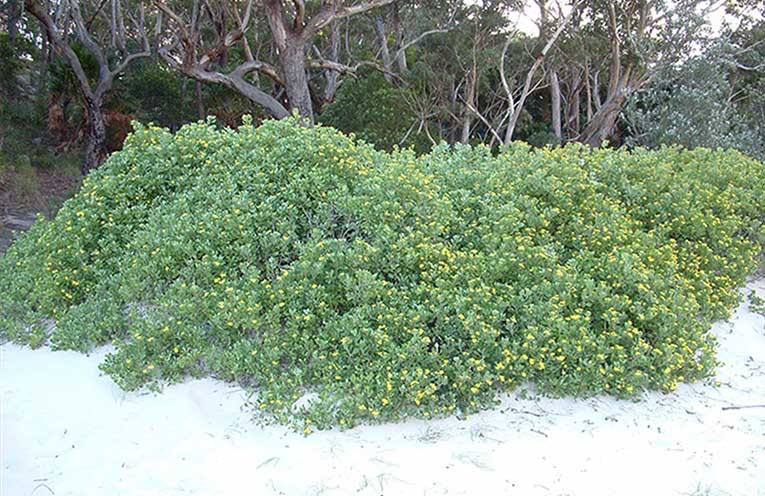
COUNCIL’S annual Bitou Bush eradication program will begin in the coming weeks with a range of strategies being used to attack this long-term coastal issue.
 Advertise with News of The Area today.
Advertise with News of The Area today.It’s worth it for your business.
Message us.
Phone us – (02) 4981 8882.
Email us – media@newsofthearea.com.au
Strategies include aerial spraying using drones, as well as abseiling down cliff faces to target inaccessible, remote stretches of beaches and headlands.
Aerial spraying along the coastline, undertaken in conjunction with the current National Parks and Wildlife program, will begin on 1 June and continue through to 29 June, weather permitting.
“We’re conscious of the community’s concerns around the use of herbicides but as always we’d like to reassure everyone that our contractors only use approved treatment methods,” advised Terry Inkson, MidCoast Council’s Strategic Weeds Biosecurity Officer.
The program will be carried out following recommendations contained in the ‘Best Practice Guidelines for Aerial Spraying of Bitou Bush in New South Wales’ published by the Department of Environment and Conservation.
Specific areas on the coastal strip within the MidCoast region will be treated by aerial spraying, from Crowdy Head, south to Hawks Nest.
Sections of beaches, carparks and roads will be subject to short term temporary closures while the aerial spraying is being carried out.
“There will be short closures of areas as the aircraft and individuals undertake the work, with Council staff on site during these closures, as well as signage in place to notify the community,” said Terry.
“This year’s program does include on ground spraying of dunes along the main stretch of Old Bar Beach and we’re urging the community to look out for signage in the area.”
Both MidCoast Council and National Parks and Wildlife Service are conducting the spraying programs and Council is supporting Landcare in the ongoing regeneration of the dunes.
“We’re working closely with Landcare to restore the dunes and replanting will take place within days of the spraying,” added Terry.
“Together our long-term continual management of re-emerging Bitou, will create a healthier dune system and this is particularly important in erosion hot spots.”
Bitou bush invades native coastal heathlands and dunes. It grows quickly and forms dense hummocks between which coastal breeze is channelled promoting erosion.
Bitou also replaces native plants both by direct completion and by altering the soil chemistry, further weakening the structural integrity of our dunes and destroying the complex habitat of native mammals and birds.
Infestations can smother sand dune, headland and coastal vegetation communities and many threatened species and plant communities have been affected.
“The combined efforts of both Council and the National Parks and Wildlife Service over the past decade have seen a huge reduction of mature bitou bush in managed areas and we need to continue to work to eradicate this threatening species.”
MidCoast Council continues to work closely with the National Parks and Wildlife Services (NPWS) to ensure consistent management of Bitou along the MidCoast and schools and businesses, as well as home owners in close proximity to this year’s targeted areas have been notified of the project.
“These ongoing treatments are necessary to control re-emerging juvenile plants and to bring previously unmanaged areas into the program.”
For more information, including frequently asked questions, head to Council’s website www.midcoast.nsw.gov.au/bitoubush or call MidCoast Council on 7955 7777 or National Parks and Wildlife Service on 6591 0300.
